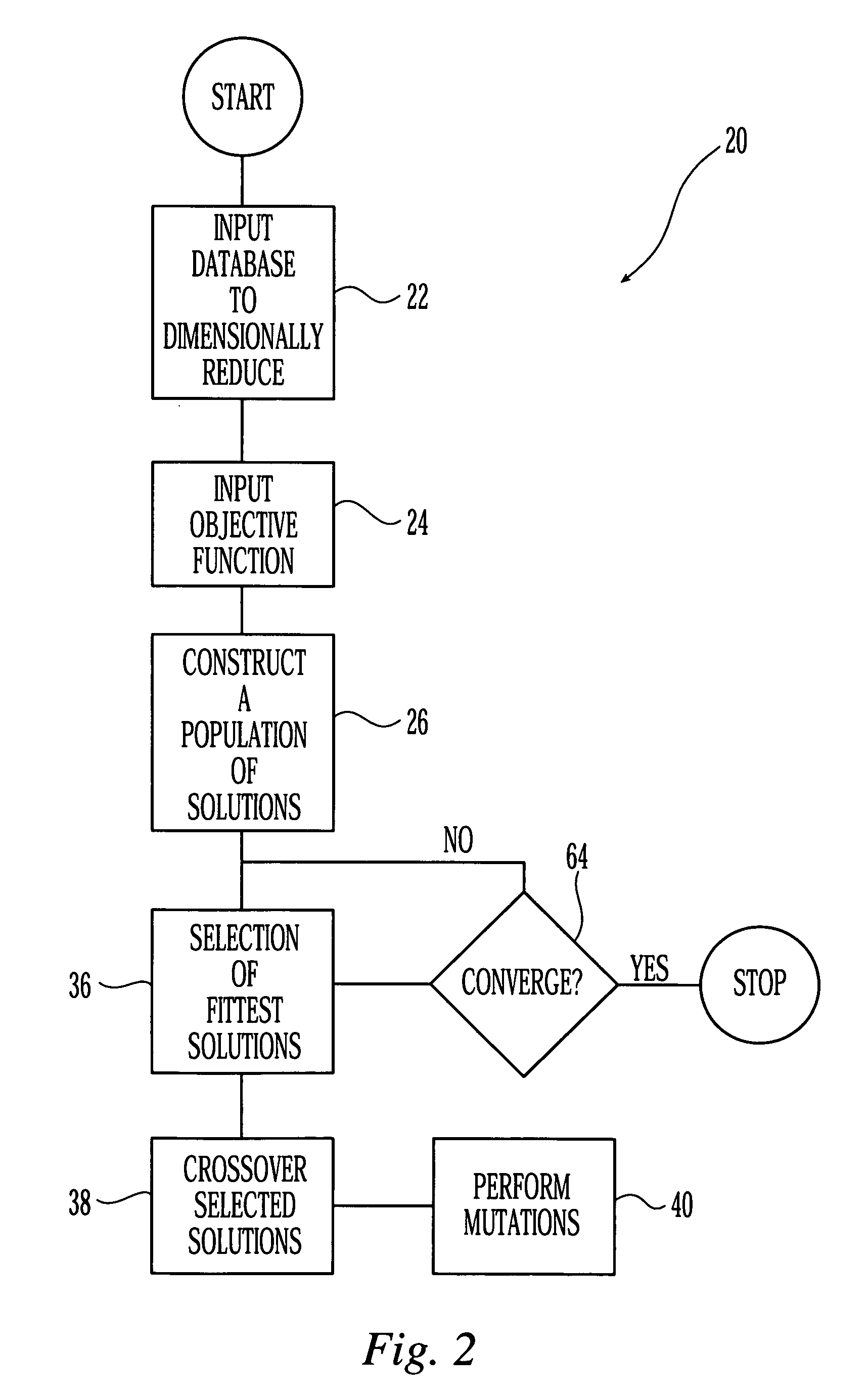System and method of flexible data reduction for arbitrary applications
a data reduction and flexible technology, applied in data processing applications, code conversion, instruments, etc., can solve the problems of not providing the best subspace that optimizes class discrimination, not necessarily true, and not necessarily useful variance-centered approaches in arbitrary data mining applications
- Summary
- Abstract
- Description
- Claims
- Application Information
AI Technical Summary
Problems solved by technology
Method used
Image
Examples
Embodiment Construction
[0029] In FIG. 1, an embodiment of a system 10 in accordance with the present invention is illustrated. In the embodiment as illustrated, the system 10 contains at least one server 12 in communication with a plurality of clients 14 across a network 16. Suitable networks include wide area networks, for example the internet or World Wide Web, local area networks (LAN), secure area networks, virtual private networks (VPN), public switched telephone networks (PSTN) and combinations thereof. The server 12 includes a processor, for example a central processing unit (CPU) and is in communication with one or more electronic computer readable storage mediums 18. In addition to the operating system for the server 12, the storage medium 18 can include the computer readable code which when executed by the processor performs a method of dimensionality reduction in accordance with the present invention. The storage medium 18 can also include the data that are analyzed or accessed by the clients a...
PUM
 Login to View More
Login to View More Abstract
Description
Claims
Application Information
 Login to View More
Login to View More - R&D
- Intellectual Property
- Life Sciences
- Materials
- Tech Scout
- Unparalleled Data Quality
- Higher Quality Content
- 60% Fewer Hallucinations
Browse by: Latest US Patents, China's latest patents, Technical Efficacy Thesaurus, Application Domain, Technology Topic, Popular Technical Reports.
© 2025 PatSnap. All rights reserved.Legal|Privacy policy|Modern Slavery Act Transparency Statement|Sitemap|About US| Contact US: help@patsnap.com



